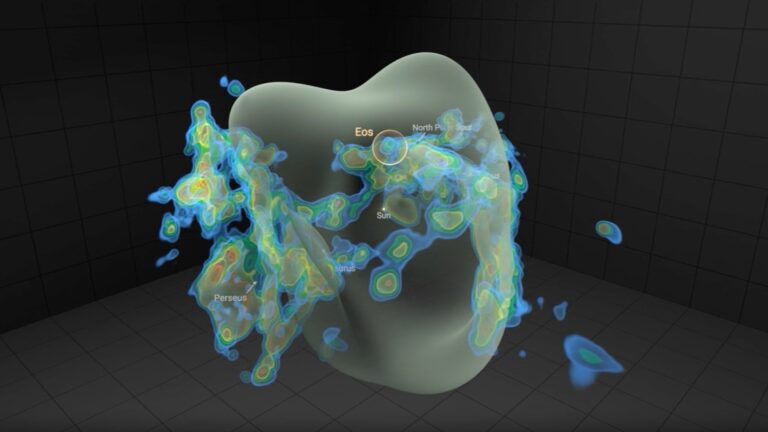‘Heroes and Humanity’ Retrospective Honoring Jack Kirby, Creator of Iron Man, Hulk, Black Panther and The X-Men, Opens in Los Angeles
2025-05-01T15:23:05Z
As the creator of the Avengers, Black Panther, the Fantastic Four, the Hulk, Iron Man, the Silver Surfer, Thor and the X-Men among many other characters, comic book artist Jack Kirby more than earned the nickname “The King.” From his entry into comics in 1936…
As the creator of the Avengers, Black Panther, the Fantastic Four, the Hulk, Iron Man, the Silver Surfer, Thor and the X-Men among many other characters, comic book artist Jack Kirby more than earned the nickname “The King.”
From his entry into comics in 1936 to his death in 1994, Kirby drew a reported 20,000 pages of published art, almost 1,400 covers and thousands of other works ranging from concept drawings to animation to fine art. As indisputably deserving as he is of being honored for his impact to popular culture, suffice it to say that displaying all of his work would require more wall space than most museums possess in their entirety. But starting May 1, Los Angeles’ Skirball Cultural Center will exhibit a retrospective, “Jack Kirby: Heroes and Humanity,” showcasing rare original artwork and comics as well as personal effects such as his U.S. army uniform.
As fascinating as an overview of his career is, Skirball vice president and museum director Sheri Bernstein highlighted the multidimensionality of the exhibition, which honors his printed accomplishments through the filter of his Jewish background. “Jack Kirby, born Jacob Kurtzberg in 1917, did rise from humble beginnings on the Lower East Side to build a remarkable career,” said Bernstein April 29 during a press preview. “But like other Jews in the comic book industry, he did so under an Americanized name and in one of the few creative fields that was open to Jews of his generation.”
Popular on Variety
“Kirby infused his fanciful stories and imagined worlds with mythical and biblical content and real-world relevance,” she added, “which is in part why his work is so rich and continues to inspire creatives to this day.”
Further explained Michele Urton, the exhibition’s organizing curator, “Most of the objects in this exhibition are original art spanning Jack’s incomparable career and highlighting the ever-expansive worlds that he imagined. I invite you to explore them with an eye towards his incredible capacity for storytelling and world building, but also for the pure joy of witnessing his creative style develop across time and in different mediums.”
For superhero fans and collectors of comic book art, the exhibit offers both a chronology of the medium’s evolution — one that he shaped first hand — and an endless smorgasbord of timeless imagery. Protected behind glass is a copy of the very first issue of “Captain America,” and in another room, a wall bearing original issues of “Thor,” “Iron Man,” “Fantastic Four” and many more books that have been permanently embedded in the iconography of the medium (and subsequently recreated or paid tribute in films about their characters). Alongside those well-known gems are original pages and reproductions of his more obscure work on non-superhero science fiction and fantasy comics, all striking, unique and unforgettable.
According to co-curator Patrick A. Reed, assembling all of the materials needed for such a retrospective was often a tough challenge. “Comic books were a disposable media, so none of this work was preserved by the publishers. None of it was archived,” Reed told Variety. “Original comic art from the 20th century largely exists in the hands of private collectors, and those are because those people collected it. So the difficult thing is finding specific pieces of original artwork.”
Even so, Reed said that culling those materials not simply to the “essentials” but to a walkable exhibition that traced his work and his life forced them to make tough decisions about exactly which bits of ephemera to highlight. “Because it’s Jack Kirby and he was incredibly prolific, trying to figure out how to both hit all of the important narrative points — and then leave out some of the things that we really wanted in the show because it’s all so beautiful and so exciting — was really difficult in two different directions.”
The Dream Machine, Circa 1975, Pencils and watercolor by Jack Kirby
From that first cover image of Captain America fighting fascism — even before America entered World War II, and him with it — the chosen art tells a parallel story about Kirby’s personal values. “We absolutely wanted to include pieces that we felt illuminated some of Jack’s perspectives, some of Jack’s ideology,” Reed said. “It’s always sort of a balancing act — you come up with a rough narrative of the points that you want to hit in the show. Here’s the life events, here are the artistic things that we want to represent.” Reed said that the curatorial process was filled with unexpected, and exciting, moments of discovery.
“Some of it, because all of these works are in private hands, is suddenly finding something and stumbling upon a thing that you never imagined existed, and suddenly everything shifts and and you redraw all of the walls,” he said. “When the Kirby family offered that first sketch of T’Challa, the Black Panther, that’s a character who’s now known the world over, and this is the first time that character ever appeared.”
The sketch of T’Challa, featuring a colorful costume that’s nothing like the ebony bodysuit that has become synonymous with the hero, is just one of many extremely rare pieces of art that fans won’t be able to see up close anywhere but at the Skirball center. “I sometimes say we’re like the world’s nerdiest Indiana Jones, sort of stumbling around seeing what we can find and then completely rethinking the narrative as we go,” Reed jokes. Other unique pieces include an unpublished portrait of DC villain Darkseid, a page from Marvel’s adaptation of Stanley Kubrick’s “2001” that was personally colored by Kirby, and an unpublished piece entitled “Paul and Linda Meet Magneto,” a gift for former Beatle McCartney and his wife the artist gave them backstage at the LA Forum in 1976, during a tour with his band Wings.
Darkseid, Circa 1971, Pencils by Jack Kirby © DC Comics
Pressed to select a single piece of art or collectible he’s most excited for fans to see, Reed perhaps unsurprisingly demurs. “It’s not like saying, who’s your favorite kid?” he insists. “But it is like saying, who’s your favorite person in the orphanage that you get to visit? And you can’t really pick one of those.” Ultimately, it’s the exhibition’s holistic focus on Kirby that Reed says tells the intended story, more than any one historic accomplishment (or even dozens of them). “Seeing all of those things really sort of brings the person to life, and brings me a little closer to appreciating on an even deeper level that this isn’t just the guy who created the characters or told the stories,” Reed said.
“People are still pulling from that visual sensibility. And as a historian and a deep Kirby nerd, those are things that I’m still amazed by — because there’s always more to learn and more to discover.”
Auto-posted from news source






